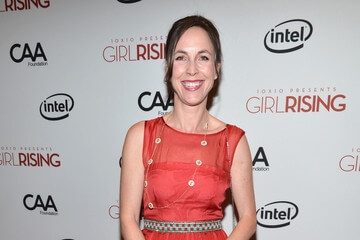When Martha Adams was younger and learning about the civil rights movement, she used to ask her parents all kinds of questions about the ‘60s.
“I thought it would be incredible to be a part of a movement that changed society for the better,” she says. “I kind of had envy.”
But after focusing much of her career on documenting and exposing stories around the world, such as the trafficking of children in the United States, it’s now Adams who finds her involvement with global issues to be something that’s envied—and admired—by others.
The project:
Girl Rising, which is one of the award-winning producer’s latest projects, is a documentary that follows nine girls from nine different countries as they tell their stories. Each woman focuses on an issue that could be the single, most effective thing a country could do to end poverty: educate women.
After honing in on the candidates from each of the nine countries, Adams and her team paired each girl with acclaimed female writers from the same country who then helped tell the stories. Each story was also matched with a famous actress for narration, including Meryl Streep and Selena Gomez.
“It’s the ultimate trifecta,” Adams says of the process. “Everyone collaborating and pulling their talent to tell a very important story.”
The project, which began roughly three years ago, set out to tell a different story at first. “The initial goal was to make a film that would explore the whole idea of how to end global poverty,” says Adams.
The Documentary Group started to conduct research by traveling to Washington, D.C. to talk with experts and interview big thinkers on development and poverty. “It seemed like no matter who they spoke to, whether it was an economics person, an advisor or even someone dealing with clean water, somebody inevitably would say, ‘Have you seen the numbers about girls’ education? They’re incredible,’” says Adams.

New ideas:
The relationship between poverty and girls’ education seemed to be strong, beginning a new conversation for the team. “It’s a very powerful correlation. When you educate girls, infant mortality goes down,” says Adams. “When you educate girls, crops go up…gross national product goes up. This equation, unfortunately, does not exist in such a dramatic fashion with men.” According to Adams this because when a woman is educated, she makes sure her children are educated too.
Sixty-six million girls are missing from classrooms around the world. This “fun fact” is what sparked another interesting question for Adams: What percentage of our money, our dollar, our foreign aid is geared towards women's education? “It’s minuscule," she explains. “It’s less than three percent of a dollar that we spend overseas with our aid to fund education.”
After spending about a month in each country working with the women in the film, and most importantly, the nonprofit organizations that figured out how to empower girls, Adams met many who were living in tough conditions. “I saw exactly how these women are game changers. How in one generation they are stopping the cycle of poverty. Girls, whose mothers and grandmothers never learned to read or write,” says Adams.
Findings along the way:
Although those working on Girl Rising had a story they wanted to tell, they found themselves listening heavily to the writers from each region. “They had a better understanding of issues in the country,” Adams explains.
It was important to the writers and everyone else involved in the project to not have the world thinking of the countries in a one directional way. “We wanted to tell a nuanced story,” Adams says. “Who are we from the West to determine what should be told?”
While abroad, Adams was surprised to see that injustices that come in the form of gender violence and discrimination are changing. “There are countries making great progress,” she says. “When a country puts some muscle behind it, they are seeing real progress. Nepal and India, where girls century after century have been subjugated—you can see the entire generation go to school and become active members of society. It is really terribly exciting.”
According to Adams, there has never been a better moment for tackling issues of women empowerment. “This movement, the liberation of educating girls in the world today, is the movement of our time,” she says. “It might not be right outside your door, but anyone can participate. It is very exciting—especially for college students.”
How you can get involved:
1. Check out the website: girlrising.com
2. See the film: “I know that sounds really straightforward, but I think that everyone will be so surprised by how much you not only learn, but how easy it is to become involved,” says Adams. “You can spark the conversation in your own community in the classroom among friends.”
– Check for showings near you. Click “See the Film” and punch in your zip code.
– Don’t see one? Book one. Participating movie theaters will reserve a space—all you have to do is reserve 60% of the seats in two weeks.



















